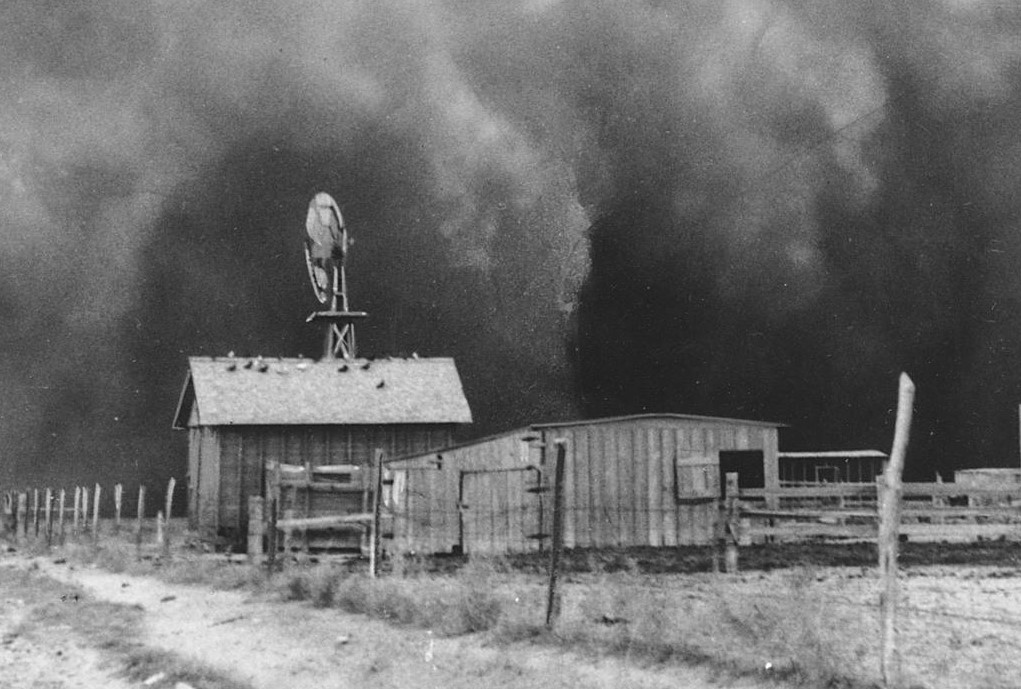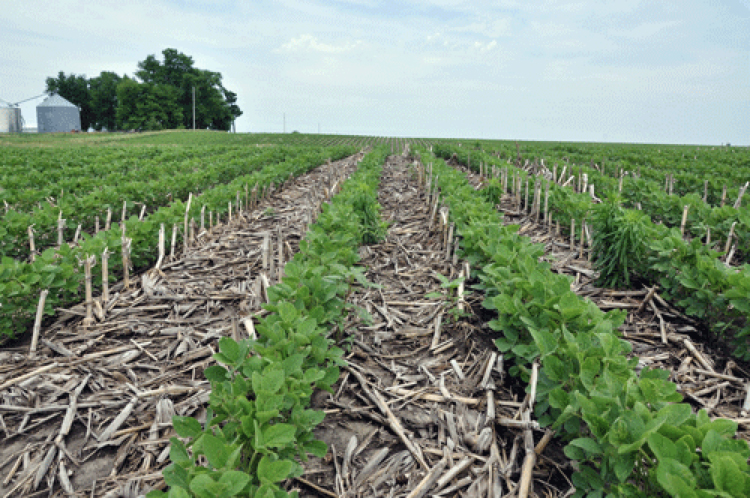Someone once said, “In order to know where we are going, we must know where we have been.” This certainly fits the High Plains region.
As we look back, it has been nine decades since the winds of the Dust Bowl ravaged our lands destroyed our farms taking with it our crops, livestock, and the very things we held dear and needed to make a living. Twenty years later, the drought of the 1950s picked up where the Dust Bowl left off and dealt us another blow. Wildfires are now adding to the list of adversities that the people have had to overcome.
Modern farm practices have helped quell dust storms as shown in the courtesy photo above.
Challenges beyond belief
Today, there are very few living people who remember the Dust Bowl and are still able to share their experiences. The recovery of the land and the restoration of its productivity through agricultural conservation practices is nothing short of miraculous. Surely, the history from then until now needs to be recorded.

The past has value as we move forward. I remember a sentence in the FFA creed, learned years ago, that says members believe “in the promise of better days through better ways, even as the better things we now enjoy have come to us from the struggles of former years.”
In 2018, a group of dedicated conservationists in Oklahoma came together and formed the Oklahoma Conservation Historical Society. The OCHS mission is to “collect, preserve, and share” Oklahoma’s rich conservation history. Doing that requires collecting oral and written histories and stories, photographs, and artifacts. It has not been easy, but their success has been phenomenal.
Ben Pollard, OCHS board president, credits the dedicated board members and the support of many partners who have joined the effort. He said, “We are indebted to the Oklahoma Conservation Partnership members who include the Oklahoma Association of Conservation Districts, Oklahoma Conservation Commission, USDA-Natural Resources Conservation Service, Oklahoma Association of Conservation District Employees, Soil and Water Conservation Society, and the Oklahoma Association of Resource Conservation and Development Councils.”
He added, “The support we have received from the Oklahoma Historical Society, Oklahoma State University, and the Oklahoma Department of Libraries has been invaluable.”
Preserving the past
While this has been a statewide effort, many are realizing the importance of recording and preserving the history of their individual families, farms, ranches, and businesses. The history of what has happened to the land and its caretakers over time has value for future generations who may inherit the land. For all of us who have worked the land, the history of the place you have cared for instills pride and adds value to the legacy that you leave behind. Some of the many OCHS projects can be viewed at the OCHS website which can be accessed at www.oklahomaconservationhistory.org.
Early on, OCHS identified people across the state who have made significant contributions to conservation. With the help of Oklahoma State University and USDA-NRCS, they have recorded the oral histories of 40 conservationists. Those oral histories are available to the public and can be viewed at any time. The OCHS oral history collection can be accessed at the OCHS website or the OCHS collection in the Oklahoma State University library at: Oklahoma’s Conservation Heritage Oral History Collection (okstate.edu).
Photographs crucial
Photographs are also an important part of recording conservation history. OCHS has assembled more than 10,000 historical photographs. These have been digitized and can also be viewed in a searchable public data base by accessing the OCHS website, or the OCHS collection on the Oklahoma Historical Society Gateway to Oklahoma website at:
Oklahoma Conservation Historical Society-the Gateway to Oklahoma History (okhistory.org).
The Oklahoma Historical Society has a conservation exhibit that is part of the historical collections at the Oklahoma History Center in Oklahoma City. The History Center is continuing to accept artifacts to enlarge the exhibit. This is a partnership effort with OCHS.
Traveling exhibit
Additionally, using a grant from the Oklahoma Historical Society, OCHS has a Smithsonian-quality traveling exhibit that will be appearing at various locations across the state during 2024. It will be on display during the month of June at the Plains Indians and Pioneers Museum’s agricultural building in Woodward, Oklahoma. A public presentation and reception will be held on the afternoon of Saturday, June 8, in connection with the Woodward Elks Rodeo. There is no charge to attend.
While this is an Oklahoma success story, it magnifies the need to preserve the unique agricultural and conservation history throughout the country. It shows the value of conservation history for the lessons it teaches about the need to conserve resources for future generations.
Sign up for HPJ Insights
Our weekly newsletter delivers the latest news straight to your inbox including breaking news, our exclusive columns and much more.
Preserving our rich history gives value to the men and women who placed conservation on the land and recognizes those who persevered through the Dust Bowl and other troubling times and paved the way for our present agriculture.
If you were to ask the members of the Oklahoma Conservation Historical Society what the most important step is to take now, they would tell you to record the oral histories of the elders in your family before another day passes.
Tom Lucas can be reached at (580) 727-4397 or [email protected]




